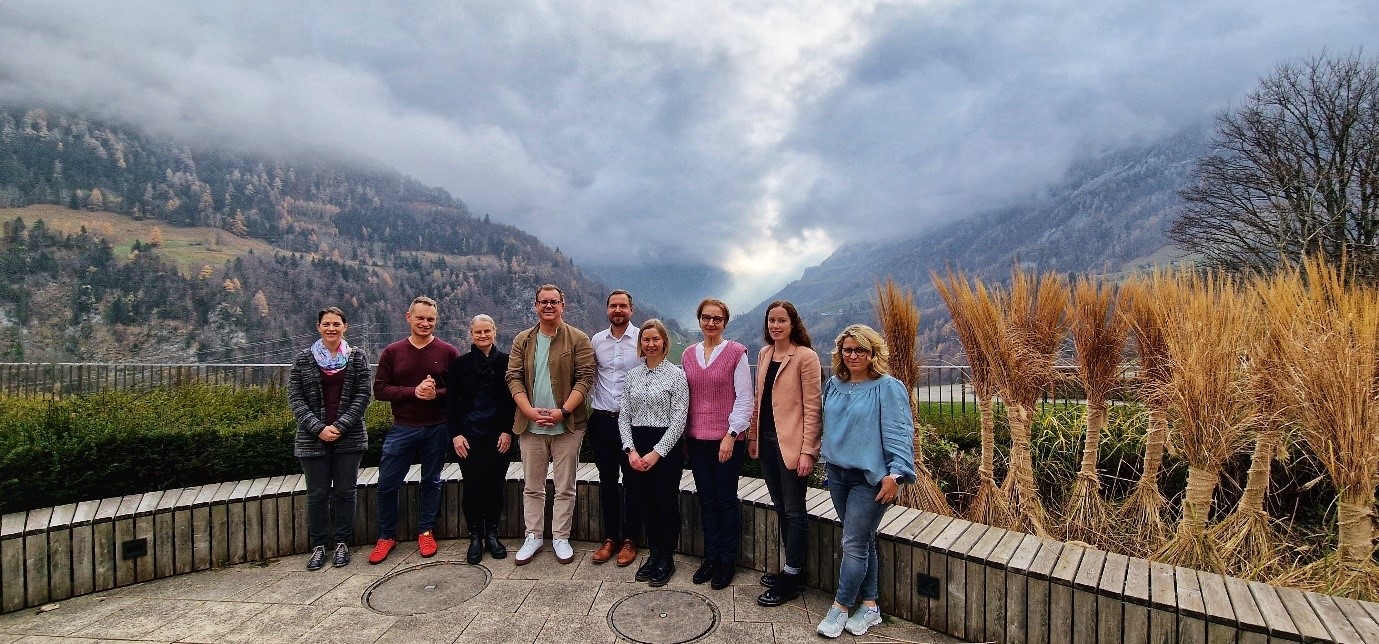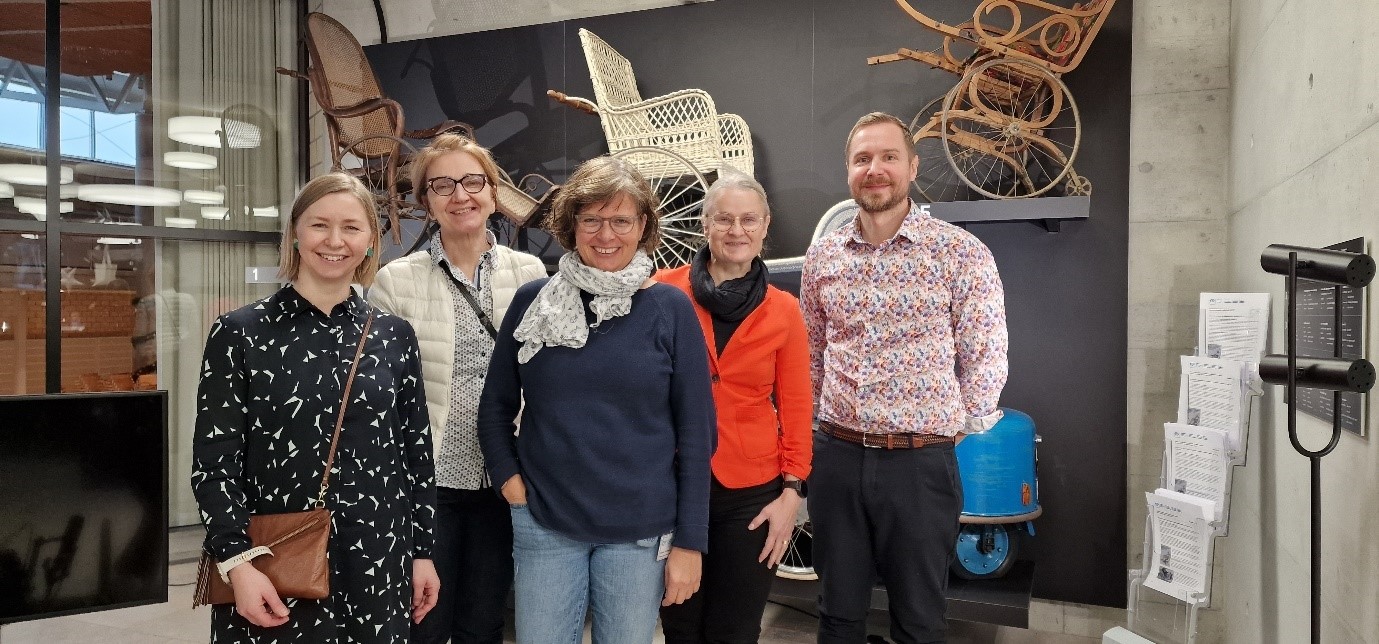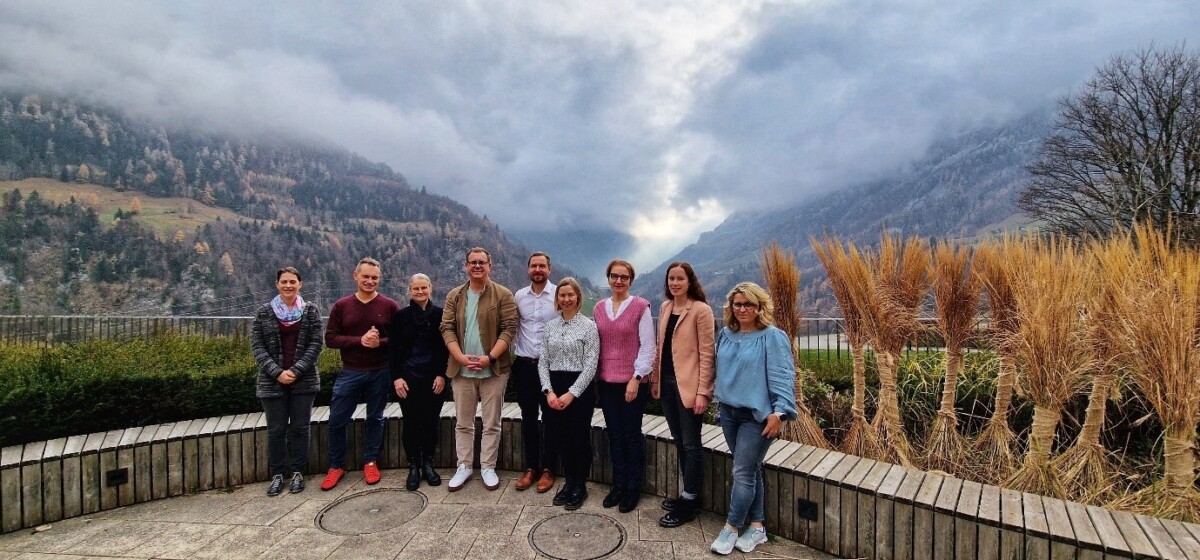
Savonia Article: Individual and Effective Rehabilitation in Switzerland
#SavoniaUAS
The project workers of KUNTOS project did a visit to Switzerland on 30.11.-5.12.2022. The main goal of the visit was to meet rehabilitation professionals and discuss with them about their experiences of rehabilitation and education.

Our first visit place was the Swiss Paraplegia Center ( https://www.paraplegie.ch/spz/en/ ). This center is specialized in institutional rehabilitation of people with spinal cord injuries. The center is globally famous for the rehabilitation of spinal cord disabled people and is a national and international training center for the spinal cord disabled athletes.
Comprehensive rehabilitation based on the ICF-model is carried out at the center. The rehabilitation center offers individual treatment and rehabilitation from the acute treatment of an injury to outpatient rehabilitation after discharge. In the rehabilitation they used the “learning by doing” as a training method, and they coach theoretically and practically rehabilitated for a new life. They invest individually in the quality of the rehabilitator’s life and making it as good as possible after the injury with progressive training. The professionals working in the rehabilitation center are not responsible for the happiness of the rehabilitated person. The rehabilitated person is responsible for that himself or herself, but the professionals are helping to achieve the happiness, if the rehabilitated person wishes so. This is one important aspect of quality of life.
The typical time in a rehabilitation center is half a year, but it can vary up to nine months. The rehabilitator’s days and the training include both individual and group therapies, physical training, individual guidance, and counseling, etc. The rehabilitator sets a rehabilitation goal for himself/herself, which he/she aims to achieve through various rehabilitation activities. It is often difficult for a rehabilitator to set a realistic rehabilitation goal after an injury. People rehabilitating often want to walk the same way as before the injury, which is often not possible. Rehabilitation goals are discussed every other week with the rehabilitator.
As one of the central methods of rehabilitation, kinesthetics is used to assist the rehabilitator. In the training included in the rehabilitation, e.g. bowel and bladder functions, nutrition, medication, skin, pain, movement, breathing and sexuality. During the rehabilitation, different issues are reviewed both theoretically and practically. Important part of the programme is that the rehabilitator independently studies digital material concerning the different topics. In addition, the same topics are practiced individually and some of them in groups. For example, with the rehabilitator the physical and occupational therapists’ practice for example transferring to a bus, practice how to move safely in different terrains or how to get to the movies. All training is tied to the injury and the difficulties in which it has brings to the rehabilitated.
New challenge in rehabilitation is mental health and aging. Those injured at a young age are getting older, and more and more older adults have accidents that result in a spinal cord injury. Also, long covid and its treatment appear in the rehabilitation center as one factor requiring rehabilitation and on the other hand as a factor to be considered in rehabilitation. These challenges highlight the operating principle: “lifelong care for the patients”. In this rehabilitation center the common digital training material and its checklist guarantee that the training material is so-called standardized, and all rehabilitated persons receive the same guidance and counseling related to treatment and rehabilitation, which facilitates the rehabilitated person’s return home.

The second place to visit was the Rehazentrum in Valens (https://www.rehazentrum-valens.ch/ ). This clinic is one of the rehabilitation group formed by five clinics. All rehabilitation clinics are in beautiful surroundings, such as by a lake or in the mountains. The clinic in question has a long history of supporting spa culture and the healing effect of warm water. Nowadays, the clients are patients of all ages suffering from musculoskeletal and neurological diseases. Most rehabilitators are women. Individual feedback from rehabilitators about rehabilitation is important to the clinic.
The rehabilitation clinic uses kinesthetics as a work method. It is used when assisting the rehabilitated person with transitions, and for example when the rehabilitated person learns to feel the movement during transitions, for example when standing up from a chair. At the clinic, family members are also trained to use the principles of kinesthetics when, for example, they assist a loved one who has had a stroke to get in and out of the car. The use of the method includes the fact that the loved one also performs the same transition exercises as the rehabilitator, so that he/she also gets a physical experience of what a well-assisted and guided transition should feel like. This helps the relative to carry out transitions according to the principles of kinesthetics. This also promotes the rehabilitator to perceive his own body holistically and positively.
The idea is learning by doing. Always during training, the rehabilitator’s own reflection on doing the exercise is used. The key thing is that physical training also has a mental side, when rehabilitators constantly see, experience, and feel when they are training.
The rehabilitation clinic also conducts a lot of research, for which it applies for external funding. The themes of the research are, for example, aging and rehabilitation, rehabilitation of the cardiovascular system, technology and rehabilitation, gaming, and its use as a therapy method, and HIIT training for rehabilitators with back pain.
In summary, it can be stated that customer-oriented and comprehensive rehabilitation is implemented in both rehabilitation centers. The rehabilitator’s learning and rehabilitation are in the center.
Author:
Marja Äijö, TtT, principal lecturer in gerontology and rehabilitation, Savonia University of Applied Sciences.